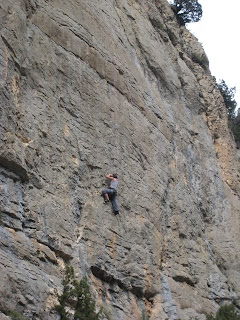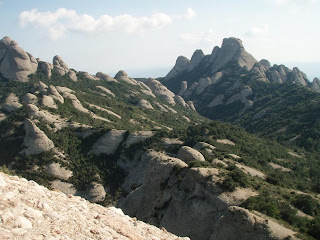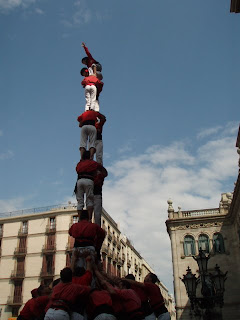La Mussara is a high quality limestone crag of up to 100m high, with a variety of bolted or not routes available. We went for Hercules Incuarteable route (from 100 best of Cataluña book, old faithful), which is actually completely bolted, long, and roofy. It reminded me a little bit about the Gunks with many horizontal crack-o-roofs to pull through. We also did a somewhat easier, also bolted route on the left there.
The next objective was to try Rif, a harder, and less bolted 4-pitch, ¨perfect crack¨route. I managed to (with many rests) lead the first 5+ pitch, we failed on the secon (6a+) and never reached the upper ones. This route will have to wait for an improved trad-head! But the start was very nice - here is Rafael following the end of the first pitch:
The second day we decided to explore Montsant range. From afar it tricked me into thinking about it as a limestone crag - but as we figured after the approach it actually is as conglomerate as it gets, with pebbles pouring from under your feet with a vengence!
We went for the rock of Falconera (picture above) having in mind the Somm d´Estiu route from the same 100 best book. However we started with Gerard Artiges route on the left (where the shade appears in the center-left of the picture above). Again, after the first 2 pitches we bailed on the third pitch as the bolting got very scarce for our liking. Here is Rafael following the first pitch:
We finished the day with some relaxed cragging at Siurana - although not that relaxed given the rather hard grades we found. But the big old bolts and quality limestone compensated for the hardship! For those looking for topos of Tarragona region, especially Siurana, please have a look here in the "otras zonas de escalada" chapter.



















































